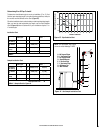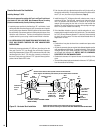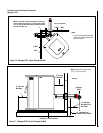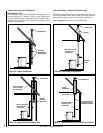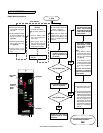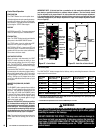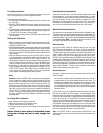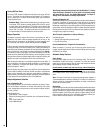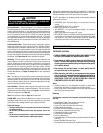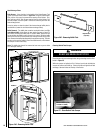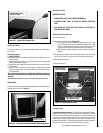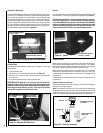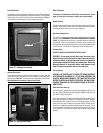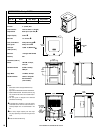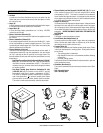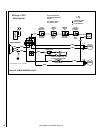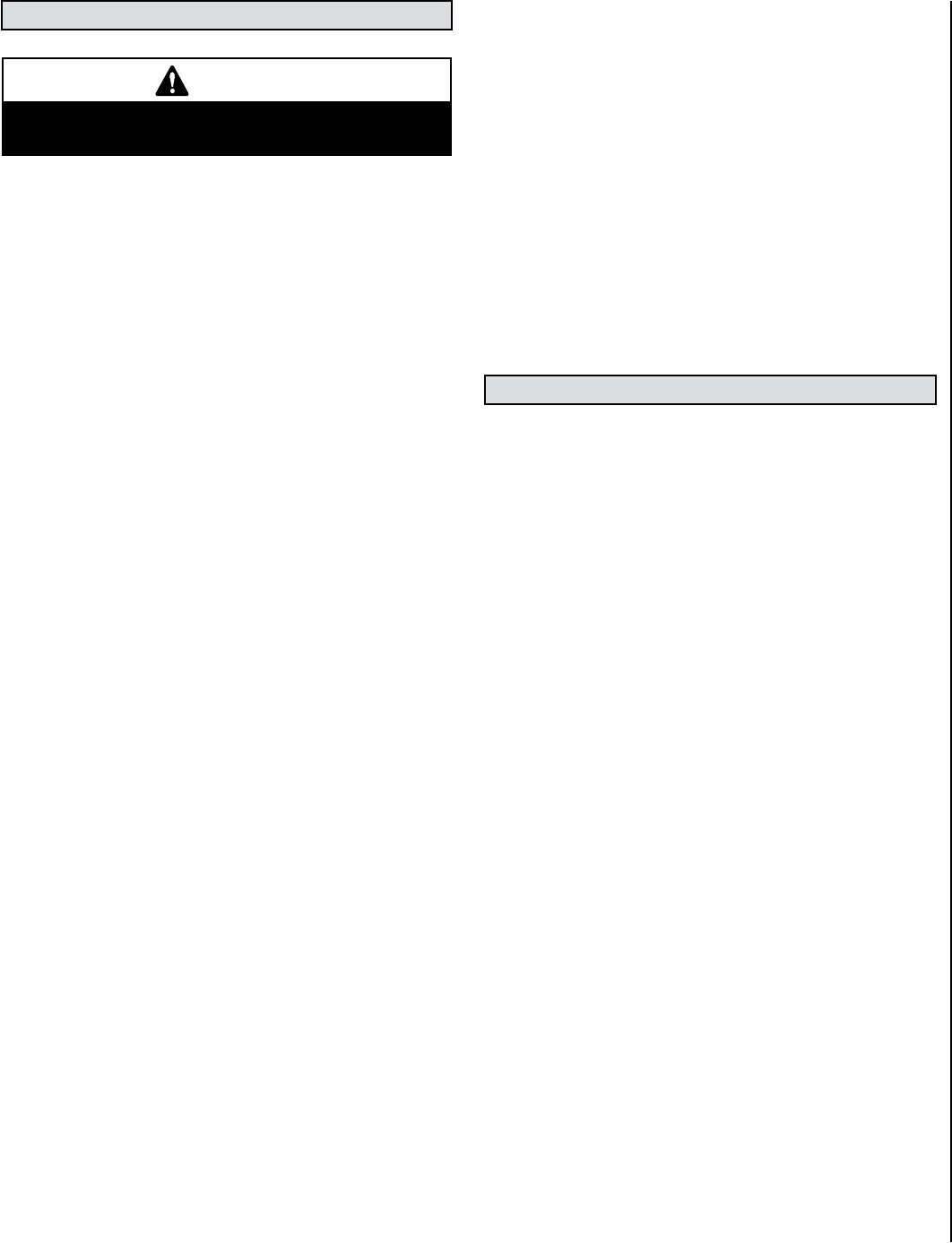
21
Fuel Specifications - Using the Ultragrate™ burn system, this appliance
has been designed to burn wood residue pellets only (with up to 2% ash
content). Agricultural pellets (i.e. corn, alfalfa etc.) are not permitted to be
burned in the stove. Dirty fuel will adversely affect the performance of the
stove. The pellet fuel should meet P.F.I. (Pellet Fuel Institute) standards
for standard grade or premium grade residential pellet fuel. If the pellet
fuel meets these standards, it will be printed on the bag. Any questions
regarding pellet fuel can be answered at the Pellet Fuels Institute (PFI),
www.pelletheat.org.
Pellet Feed/Pellet Size - The pellet feed system is designed to handle a
wide range of pellet sizes up to a maximum of 5/16” diameter. Different
pellets may feed at considerably different rates. You may notice a differ-
ence in the burn if you change pellet fuel sizes. The longer the pellet, the
slower it will feed and vice versa. If the stove will not stay burning at the
minimum fuel feed setting, those particular pellets may not be feeding fast
enough. If this happens, reduce the amount of combustion air by adjusting
the damper. See Pages 9 and 20 before adjusting the damper.
Clinkering - Silica (or sand) in the fuel, along with other impurities, can
cause clinkering. A clinker is a hard mass of silica formed in the burning
process. Clinkering is a function of the fuel, (not the stove), but adversely
affects the performance of the stove by blocking off the air passages in
the grate. Even P.F.I. approved pellet fuel may tend to clinker. A clinker
can be removed from the UltraGrate™ and placed in the ash pan with
the use of the grate scraper/ash pan tool furnished with your stove. See
Routine Maintenance (on Pages 21 through 24) for more information
on cleaning.
Ash - The frequency of removal of the ash and maintenance performed
on the stove is directly proportional to the ash content of the fuel and the
operation duration of your pellet stove. Low ash fuel may allow longer
intervals between cleaning, however, a stove burning high ash fuel may
need to be cleaned as often as everyday.
Fuel Feed Rates - Different brands of pellets will feed at varying rates
due to their size and density (length and diameter). This may require a
slight adjustment in the damper control (see Page 9) or the fuel feed trim
control to compensate (see Page 18).
Note:
See Fuel Delivery Rate on Page 18 for burn times.
PLEASE NOTE
: Lennox Hearth Products has no control over the manu-
facturing of pellet fuel and will not be held responsible for poor stove
performance or any damage caused by poor quality pellet fuels.
Pellet Fuel Storage -
• Store your wood pellets in a dry place to prevent them from absorb-
ing excess moisture.
• Do Not store your wood pellets within the clearance zone of the
stove.
• Do Not store your wood pellets in a place that would block removal
of the ash pan or block access to refueling the hopper.
FUEL
CAUTION
The use of unapproved, dirty, wet and / or high salt
content fuel will void the warranty!
ROUTINE MAINTENANCE
Wood pellets manufactured to the pellet fuels institute (P.F.I.) certification
standard are available in two grades, Standard and Premium. The primary
difference between the two is the ash content of the pellets.
The P.F.I. specification for standard grade & premium grade residential
pellet fuel is as follows:
• CHLORIDES (Salt): Less than 300 p.p.m. to avoid stove and vent
rusting.
• BULK DENSITY: 40 lb. / Cu. Ft. minimum
• MOISTURE CONTENT: 8% maximum
• ASH CONTENT: < 2% maximum (standard grade) < 1% maximum
(premium grade)
• FINES: 0.5% maximum through a 1/8” screen
• BTU CONTENT: There are a number of variations in pellet fuels that are
not included in PFI standards. For example, BTU (heat value) content
may range from just under 8,000 to almost 9,000 BTU, depending
upon species and region of the country and other variables.
IMPORTANT CAUTIONS:
• UNPLUG POWER CORD AND ENSURE APPLIANCE IS COLD
BEFORE PERFORMING ANY MAINTENANCE WORK.
• Some brands of pellets produce more ash and clinkers than
others. Therefore the frequency of performing the following
cleaning procedures depends to a great degree on the quality
of the pellets burned.
• Not cleaning this unit will cause it to burn poorly and will
void your warranty for this appliance.
• When removing ash build-up, use an approved ash vacuum
only. A cleaning brush can be used to loosen any ash build-up
before vacuuming. DO NOT USE A STANDARD HOUSEHOLD
VACUUM OR “SHOP VAC” AS THE FILTERS WILL LEAK THE
FINE PARTICLES OF ASH INTO THE HOME.
Notes
• Cleaning schedule will vary depending on quality of pellets used.
Burning high ash pellets will require more frequent cleaning.
• Using a drop cloth is recommended as some ash may spill onto the
floor during the cleaning process.
Cleaning
The following areas need to be inspected and cleaned during routine
cleaning:
• Heat Exchange Tubes / Tube Scraper (Homeowner)
• Baffle Plates (Qualified Technician Only)
• Proof of Fire Switch (Qualified Technician Only)
• Window Wash (Homeowner)
• Ash Clean-Out Ports (Qualified Technician Only)
• Paint Touch-up (Qualified Technician Only)
• UltraGrate (Burn Grate) (Homeowner)
• Ash Slide Plate (Homeowner)
• Ash Pan (Homeowner)
• Exhaust Passages / Vent Pipe and Creosote Removal (Qualified Techni
-
cian Only)
• Gaskets (Qualified Technician Only)
• Cleaning Rear Stove Compartment (Qualified Technician Only)



